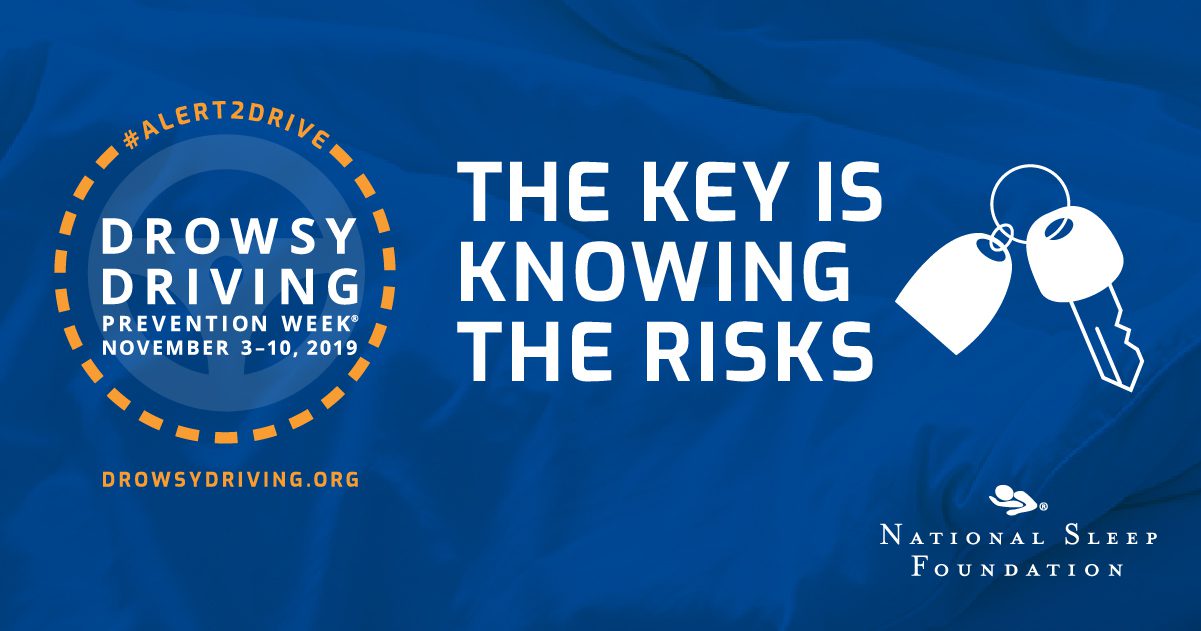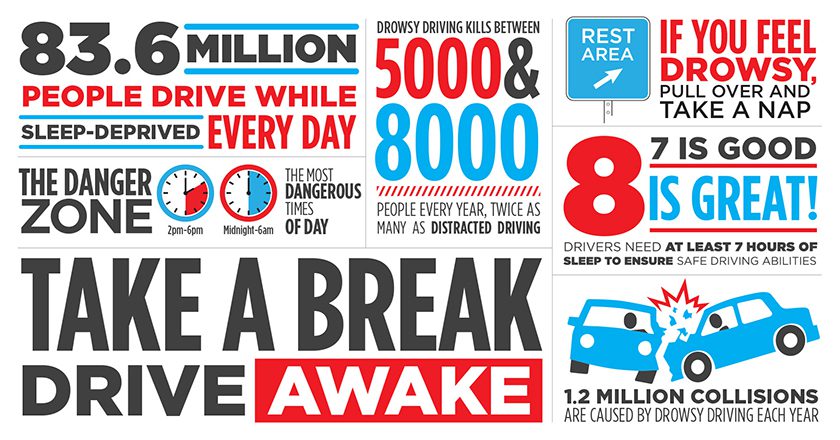
Drowsy driving is responsible for an estimated 6,400 U.S. deaths annually. To help heighten awareness of this danger, The National Sleep Foundation has declared November 3-10, 2019 as Drowsy Driving Prevention Week
Fortunately, MOST people wouldn’t get behind the wheel and drive when they have been drinking but they might not think twice about driving while they are tired. Yet, drowsy driving can affect driving abilities as much as drunk driving.
- Slowed reaction time. This is especially dangerous if you have to brake or steer suddenly
- Reduce ability to make good decisions. Impaired judgment and vision
- Inability to pay attention to the road, problems with information processing and short-term memory
- Increased moodiness and aggressive behaviors
- Get a full night of seven to eight hours of sleep before driving
- Avoid driving late at night
- Avoid driving alone
- On a long trip, share the driving with another passenger
- Use caffeine for a short-term boost
- Take a short nap after consuming caffeine to maximize the effect
- Arrange for someone to give you a ride if you’re tired
The most obvious signs that you shouldn’t be driving is frequent yawning or blinking, drifting from your lane or unexpectedly hitting a rumble strip on the side of the road.
Rolling down the windows or turning up the volume on the radio will not increase your alertness while driving. The effects of these are temporary and might fool you into thinking you are more alert than you are. If you experience any of these warning signs, the best thing to do is pull over to rest or change drivers. Exercise can also help you “wake up.” Pull over to a rest stop or parking lot and take a brisk walk before getting back behind the wheel.
Falling asleep at the wheel is preventable. Stay safe and plan ahead.

